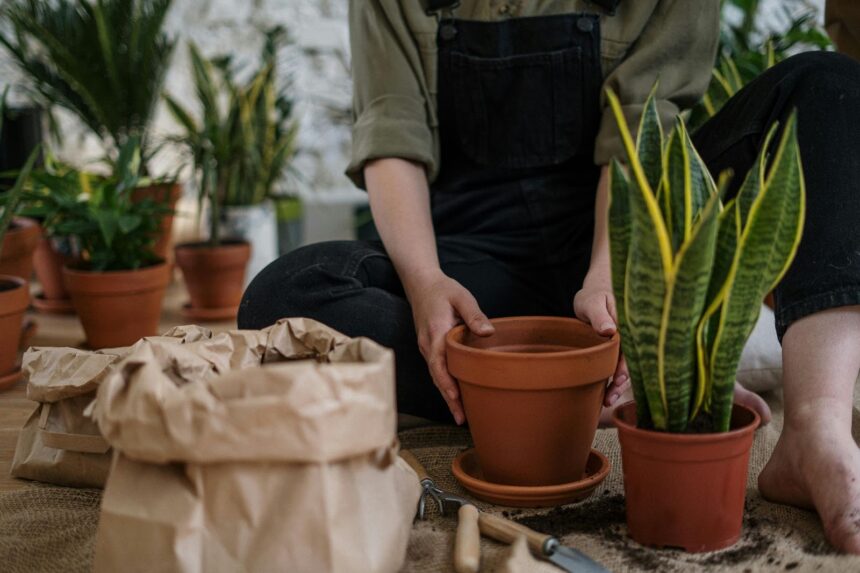Gardening is a beloved activity for many, offering both physical exercise and mental relaxation. Whether you’re an experienced gardener or just starting out, there’s always room to improve and nurture your garden to its fullest potential. While having a green thumb may come naturally to some, it takes dedication and effort to ensure your plants thrive.
In this blog post, we’ll cover six key steps to help you nurture your garden and achieve a bountiful harvest. From soil preparation to proper watering techniques, we’ll take a comprehensive look at the essential elements of a successful garden. Here are the 6 key steps to take for nurturing your garden:
Assess Your Garden’s Needs
The first step to nurturing your garden is to assess its needs. Take a walk around your garden and observe the current state of your plants. Are they thriving or struggling? Are there any signs of pests or diseases? This initial assessment will help you identify any potential issues that need to be addressed.
Additionally, you can also consider upgrading your garden tools and equipment if necessary. For instance, you can discover urban gardening innovations, like planters that allow for efficient watering, or ergonomic gardening tools that reduce strain on your body. Once you have a clear understanding of your garden’s needs, you can move on to the next steps in nurturing your garden.
Prepare the Soil
One of the most crucial factors in nurturing a healthy garden is preparing the soil. Before planting any seeds or seedlings, it’s essential to ensure that the soil is nutrient-rich and well-drained. Start by removing any weeds or debris from the area and loosening the soil with a garden fork.
Next, organic matter such as compost or aged manure should be added to enrich the soil. This will provide the necessary nutrients for your plants to grow strong and healthy. It’s also important to test the soil pH levels and make adjustments accordingly. By taking the time to prepare your soil, you’ll set a strong foundation for your garden to thrive.
Choose the Right Plants
Selecting the right plants is crucial for nurturing a successful garden. Consider factors such as climate, sunlight, and water requirements when choosing which plants to grow. It’s also helpful to research which plants are suitable for your specific region or growing season.
Additionally, think about what you want to achieve with your garden. Are you looking for a colorful flower bed or a bountiful vegetable patch? Choose plants that align with your goals and will thrive in your garden’s conditions. By choosing the right plants, you’ll set yourself up for a flourishing and visually appealing garden.
Water Regularly and Properly
Water is one of the essential elements for plant growth, and it’s crucial to water your garden regularly and properly. Different plants have varying water requirements, so it’s vital to research how much water each type needs.
One helpful tip is to water deeply but less frequently rather than lightly and frequently. This allows for deeper root growth and helps plants become more resilient to drought conditions. It’s also crucial to water at the right time of day, preferably in the morning, to reduce evaporation and give plants ample time to absorb the water.
Provide Adequate Sunlight
Plants need sunlight for photosynthesis, which is essential for their growth and development. As a gardener, it’s critical to understand the sunlight requirements of your plants and position them accordingly. Some plants thrive in full sun, while others prefer partial or full shade.
Observe the sun patterns in your garden and choose suitable locations for different types of plants. You can also use shading tools, such as umbrellas or shade cloth, to protect plants from excessive sunlight. Adequate sunlight will ensure your plants receive the energy they need to flourish and produce a bountiful harvest.
Monitor and Maintain Your Garden
The final step in nurturing your garden is to monitor and maintain it regularly. This includes keeping an eye out for any signs of pests or diseases, as well as checking soil moisture levels and making necessary adjustments.
Regular maintenance tasks such as weeding, pruning, and fertilizing are also crucial for the health of your plants. It’s also essential to keep an eye on weather patterns and adjust watering schedules accordingly. By consistently monitoring and maintaining your garden, you’ll be able to catch any potential issues early on and ensure your plants continue to thrive throughout the growing season.
Nurturing your garden takes time and effort, but the rewards are well worth it. By following these six key steps, you’ll be on your way to a thriving and beautiful garden. Remember to regularly assess your garden’s needs, prepare the soil correctly, choose the right plants, and water properly, provide adequate sunlight, and monitor and maintain your garden. With dedication and care, your garden will flourish, providing you with a source of joy and nourishment.













